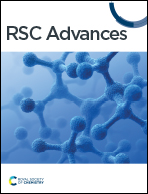Effect of M-type reactive dyes on dyeing properties of twisted bamboo fiber bundles
Abstract
The dyeing properties of twisted bamboo fiber bundles were studied by using the combination of three primary colors in M-type reactive dyes. The study found that the three dyes of red, yellow and blue have good color rendering in the actual dyeing process, and because the molecular structures of the three are similar, the chemical reactions during the fixation are the same, so the final dyeing rate results are similar, which were 29–32%. Compared with the undyed twisted bamboo fiber bundle, the mechanical properties of the three-color twisted bamboo fiber bundle also changed significantly, and the tensile strength increased by 13.79% on average. The changes of elastic modulus and elongation at break showed that the three-color twisted bamboo fiber bundle had excellent flexibility. In addition, there are significant color differences between the samples of each color. When the color indexes of DB are used as the benchmark, the ΔE* of other dyed samples varies from 40 to 80, and the color of each sample is relatively uniform, without an obvious color flower phenomenon. This indicates that twisted bamboo fiber bundles with richer colors can be prepared by different combinations of three primary dyes, which can improve the ornamental value of bamboo fiber bundles after processing into large blocks and their application potential in home textiles, interior decoration and other fields.



 Please wait while we load your content...
Please wait while we load your content...